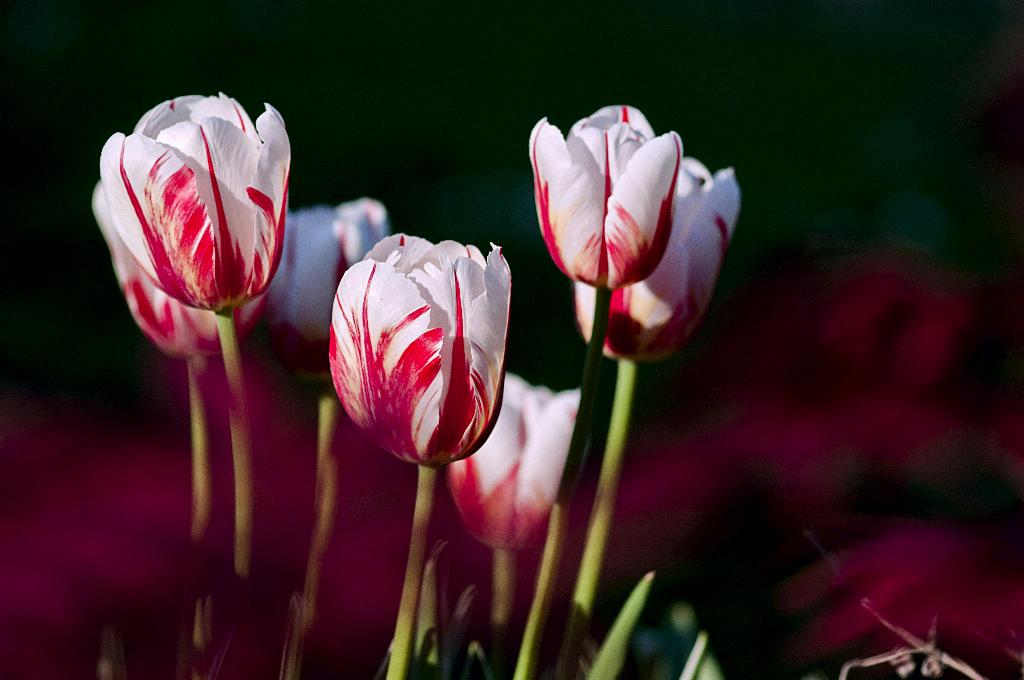When it comes to preparing your beautiful tulips for a vase arrangement, there are a few essential steps to follow to ensure they look stunning and last longer. First and foremost, grab a sharp knife before you begin trimming the stems. Cutting them at a 45-degree angle allows for better water absorption, preventing them from sitting flat in the vase and maintaining their vitality.
One crucial tip to bear in mind is to remove any white stem tissue. Why? Doing so further enhances water uptake, encouraging your tulips to stay fresh and vibrant for an extended period. By eliminating this part of the stem, you’re aiding the flower in absorbing water more effectively, resulting in a more enduring bouquet.
Another pivotal step in preparing your tulips is the removal of any leaves that would otherwise be submerged in water. Trimming these leaves below the waterline not only enhances the aesthetic appeal of your floral display but also prevents the build-up of bacteria and rot, keeping your tulips pristine and healthy for longer.
Proper maintenance is key to extending the life of your tulip arrangement. Reconditioning your tulips daily is highly recommended. This involves recutting the stems—always at an angle—changing the water, and adding fresh nourishment to provide your flowers with the best possible environment for longevity.
When it comes to the length of the stems, consider the size of your vase. It’s essential to trim the stems to the appropriate length to ensure your tulips sit nicely in the vase without overcrowding each other. Remember, a well-trimmed bouquet not only looks visually appealing but also helps optimize the water intake for the flowers.
While trimming your tulips, don’t rush the process. Take your time to cut each stem precisely and with care. Rushing could lead to uneven cuts, which might hinder the water absorption and overall health of your tulips. Precision is key to ensuring that your bouquet thrives in the vase.
Consider the overall symmetry and balance of your arrangement. As you trim the stems, visualize how the tulips will sit together in the vase. Aim for a harmonious look by trimming the stems to varying lengths, creating a natural and visually appealing display that showcases the beauty of each individual flower.
Before placing your trimmed tulips in the vase, ensure that it’s clean and filled with fresh water. Removing any dirt or residue from previous arrangements helps maintain the cleanliness of the water, which, in turn, promotes the longevity of your tulip bouquet. Fresh water is essential for keeping your flowers looking their best.
When trimming your tulips, pay attention to the overall health of the flowers. Look for any signs of wilting or damage as you cut the stems. Trim away any unhealthy parts of the stems to ensure that the remaining portions can thrive in the vase. This proactive approach helps maintain the freshness of your bouquet.
As you trim your tulips, consider the angle of the cuts. Opting for a 45-degree angle allows for a greater surface area for water absorption, aiding in the hydration and longevity of your flowers. Be mindful of the angle at which you trim the stems to optimize their ability to draw in water and essential nutrients.
Don’t forget to change the water in the vase regularly. Fresh water helps prevent the build-up of bacteria and keeps your tulips hydrated and healthy. By refreshing the water every couple of days, you provide your flowers with a clean and nourishing environment, prolonging their lifespan and vibrancy.
Lastly, enjoy the process of trimming your tulips for a vase. This simple yet rewarding task allows you to engage with the beauty of nature and create a stunning display that brightens up any room. Take your time, follow these steps carefully, and watch as your trimmed tulips transform into a gorgeous and long-lasting floral arrangement.

